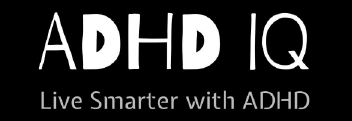ADHD evaluation
ADHD evaluations are provided by a qualified mental health care professional or physician. The provider gathers information from multiple sources in order to obtain information from more than one point of view. There is no single medical, physical, or genetic test for ADHD.
Additionally, a proper evaluation includes ADHD symptom checklists, standardized behavior rating scales, a detailed history of past and current functioning. Information obtained from family members or significant others who know the person well.
Practitioners may conduct tests of cognitive ability and academic achievement in order to rule out a possible learning disability. ADHD cannot be diagnosed accurately just from brief office observations or simply by talking to the person.
Patients may not always exhibit the symptoms of ADHD during the office visit. The diagnostician needs to take a thorough history of the individual’s life while also observing present behavior and integrating the results of validated diagnostic assessment scales. A diagnosis of ADHD must include consideration of the possible presence of co-occurring conditions.
Clinical guideline
Firstly, clinical guidelines for a diagnosis of ADHD are provided by the American Psychiatric Association in the diagnostic manual Diagnostic and Statistical Manual of Mental Disorders, Fifth Edition (DSM-5).
Additionally, during an evaluation, the clinician will try to determine the extent to which these symptoms currently apply to the adult. Finally, they will see if these were present in childhood. In making the diagnosis, adults should have at least five of the symptoms present. These symptoms can change over time, so adults may fit different presentations from when they were children.
ADHD predominantly inattentive presentation
- Fails to give close attention to details or makes careless mistakes
- Has difficulty sustaining attention
- Does not appear to listen
- Struggles to follow through with instructions
- Has difficulty with organization
- Avoids or dislikes tasks requiring sustained mental effort
- Loses things
- Is easily distracted
- Is forgetful in daily activities
ADHD evaluations show predominantly hyperactive-impulsive presentation
- Fidgets with hands or feet or squirms in chair
- Has difficulty remaining seated
- Runs about or climbs excessively in children; extreme restlessness in adults
- Difficulty engaging in activities quietly
- Acts as if driven by a motor; adults will often feel inside as if they are driven by a motor
- Talks excessively
- Blurts out answers before questions have been completed
- Difficulty waiting or taking turns
- Interrupts or intrudes upon others
ADHD evaluation show combined presentation
- Individual meets the criteria for both inattention and hyperactive-impulsive ADHD presentations.
